The Outlaw
Howard Hughes' film The Outlaw is one of the most scandalous films of the censorship era. While the film was in production the publicity team hired by Hughes went to work making Jane Russell the biggest sex symbol that Hollywood had ever seen. Russell was posed around the country at beauty contests and in large ads. Before the film even premiered, the previously unknown Jane Russell was a celebrity because of her physical beauty and sexuality. During this heavy promotion Hughes ran into trouble with the Production Code Administration (PCA) for the script and advertisements, making the film famous. Hughes released the film briefly in 1943 and then waited till after the war in 1946 for a full release. While critics derided the film, audiences lined up to see the film that had caused such a controversy. The film quickly ran into problems with censorship boards around the country and Catholic Legion of Decency, causing several theaters to voluntarily remove the film (Wittern-Keller 93-95).
Because of Hughes's refusal to change the salacious content within the film and its advertising, the MPPA threated to expel Hughes. He responded with a $5 million lawsuit based upon several arguments, one of which was based on free speech. This was the first court case about film to argue on the basis of free speech since the 1915 Mutual v. Ohio. Hughes lost his case and the judge's rulings did not leave any windows for anticensorship arguments, but Hughes's challenge was the first of many to come (Wittern-Keller 94-99). In hindsight it serves as a death knell of government censorship.
The Censorship Battle in Ohio
The Outlaw was approved with eliminations by the Board in 1941, 1942, and again in February 1946. In June of 1946 the Board was contacted by representatives of Hughes Productions who were hoping to have the film released without any eliminations. Despite the publicity for the film saying that the film was "more about sex than gunplay," the representative for Hughes Productions insisted that the film was only about the life of an outlaw and not "a vehicle for the exploiting of certain characteristics of the female lead" (Wittern-Keller 93; Memorandum, 1946, Correspondence). Dr. Clyde Hissong, the Director of the Dept. of Education and thus Chief Censor of the Board, responded by agreeing to watch the film with that statement in mind, and eliminated all parts of the film that were not directly about the story of the outlaw. There were a significant number of eliminations requested after the second viewing in 1946, almost identical to the previous list of eliminations in 1941 except the addition of more eliminated dialogue, and a majority of them were sexual scenes involving Jane Russell (Dr. Hissong to United Artists, July 1, 1946, Correspondence). The Board also gathered information about the eliminations of the film from some of the other boards (Pennsylvania, Maryland, and New York). In comparison to them, the Ohio Board requested about two pages of eliminations whereas the other boards' eliminations were only about three lines total.
During this back and forth between the distributor and the Board, Director Hissong actually received a letter of support from the Governor encouraging him to not show the film at because "The cinema industry is gradually taking more and more liberties in the showing of films that transgress reasonably decent morals" (Gov. Lausche to Dr. Hissong, June 18, 1946, Correspondence).
A request to view the film was made for a fifth time in the fall of 1946, and this time Dr. Hissong gathered together an advisory group of clergy, doctors, and upstanding citizens. Advisory groups were assembled several times throughout the history of the Board, to serve as a check to make sure the judgment of the censorship board was fair. Of the nine individuals on the committee, four voted for the film to be "approved with eliminations" and five voted for it to be "rejected", with one reviewer calling it "a sentimental glorification of crime and sex" (Memorandum, November 19, 1946, Correspondence). In December, Dr. Hissong sent a letter to the representative for Hughes Production Company informing him that the Board had decided to reject the film. Dr. Hissong writes, "Having reviewed the picture now three times [the first two viewings in 1941 and 1942 were under a different Director] - each time with increasing concern about the lack of any compensating, positive educational or moral effect to be reasonably expected from a general viewing of the picture - the Board is convinced that the picture should be judged as a whole upon the basis of its probable positive educational and moral implications if shown to audiences of all age groups. When The Outlaw is considered as a whole, rather than as a picture patched together after sufficient deletions have been made to enable it to be shoved across to the "acceptance" side of the "acceptance-rejection" line, the Board is convinced that The Outlaw should be rejected for showing in Ohio. An order to that effect has been issued today" (Dr. Hissong to Mr. Greenberg, December 4, 1946, Correspondence). This is a poignant example where the distributors insistence on the Board reviewing a film multiple times backfired, and the Board was given an opportunity to reconsider their decision and correct what they thought was a mistake.
After the rejection at the end of 1946, representatives of Hughes Productions reached out several more times to attempt and convince the Board to release the "approved with eliminations" version of the film - sometimes under the threat of legal action. But the Board remained firm, for the 1946 decision was undertaken "with a tacit understanding on the part of the petitioners that any action taken subsequent thereto would be considered final and that we would be through with The Outlaw in the Division of Film Censorship once and for always" (Dr. Hissong to Mr. Mochrie, November 28, 1949, Correspondence). Despite this strong statement, representatives called and visited the Board's offices several times in 1950 and 1951, even going as far as to call Dr. Hissong at his home. They were all repeatedly told that after reviewing the film five times, the Board refused to revisit it (Memorandum, May 2, 1951, Correspondence).
The Outlaw was released in Ohio on March 10, 1954 after the Supreme Court reserved the rejection of M, making it illegal for Ohio to censor films for crime or inciting to crime.
Censoring the Film
The film is available for free in its entirety at archive.org, and is embedded below.
As described above, The Outlaw was examined a number of times: 1941, 1942, February 1946, July 1946, November 1946. While the eliminations in 1942 were rather brief, the eliminations requested in October 1941 and July 1946 do not contain significant differences. While it would be ideal to watch the film as the Board and advisory committee did in November 1946, they watched the version that was "approved with eliminations" from July 1946. This is why Dr. Hissong states, "When The Outlaw is considered as a whole, rather than as a picture patched together after sufficient deletions have been made..." (emphasis added; Letter, 1946, Correspondence). This version of the film is unavailable, so the uncensored version of the film (above) will be examined through the lens of the July 1946 requested eliminations.
All of the dialogue of film was censored for sexual innuendo and content, and since it cannot be shown in a screenshot it will not be included in this analysis (except where it provides context for scene eliminations). This leaves the following requested eliminations: "In sequence between Rio and Billy on floor of barn, eliminate following dialog and accompanying scenes, including scenes of them struggling, to end of barn sequence....Rio: "You can bring the minister in here in the morning it it'll make you feel better about it, now get out. you're not going to die - I'll get you warm." Also eliminate all scenes accompanying above deleted dialog, including scenes of Rio sitting down on bed and removing her shoes and stockings....In bedroom sequence between Rio and Billy, eliminate deliberate exposure of Rio's breasts as she leans over Billy in bed....Where Rio is again in bedroom with Billy and where Billy starts to sit up in bed, eliminate scene where he embraces Rio and cut solidly all scenes between them in this sequence up and including all close-up scenes of their faces....Eliminate following dialog between Billy and Rio in house and all accompanying scenes between them including scenes deliberately exposing Rio's breasts....In cabin sequence after Billy says to Doc. 'Put those plates down - you're making me nervous.' eliminate scenes of Rio where her breasts are unduly exposed....Also eliminate scenes of Rio where her breasts are unduly exposed [this repeats two more times]" (Eliminations Summary, July 1946, Correspondence).
The Rape in the Barn
"In sequence between Rio and Billy on floor of barn, eliminate following dialog and accompanying scenes, including scenes of them struggling, to end of barn sequence."
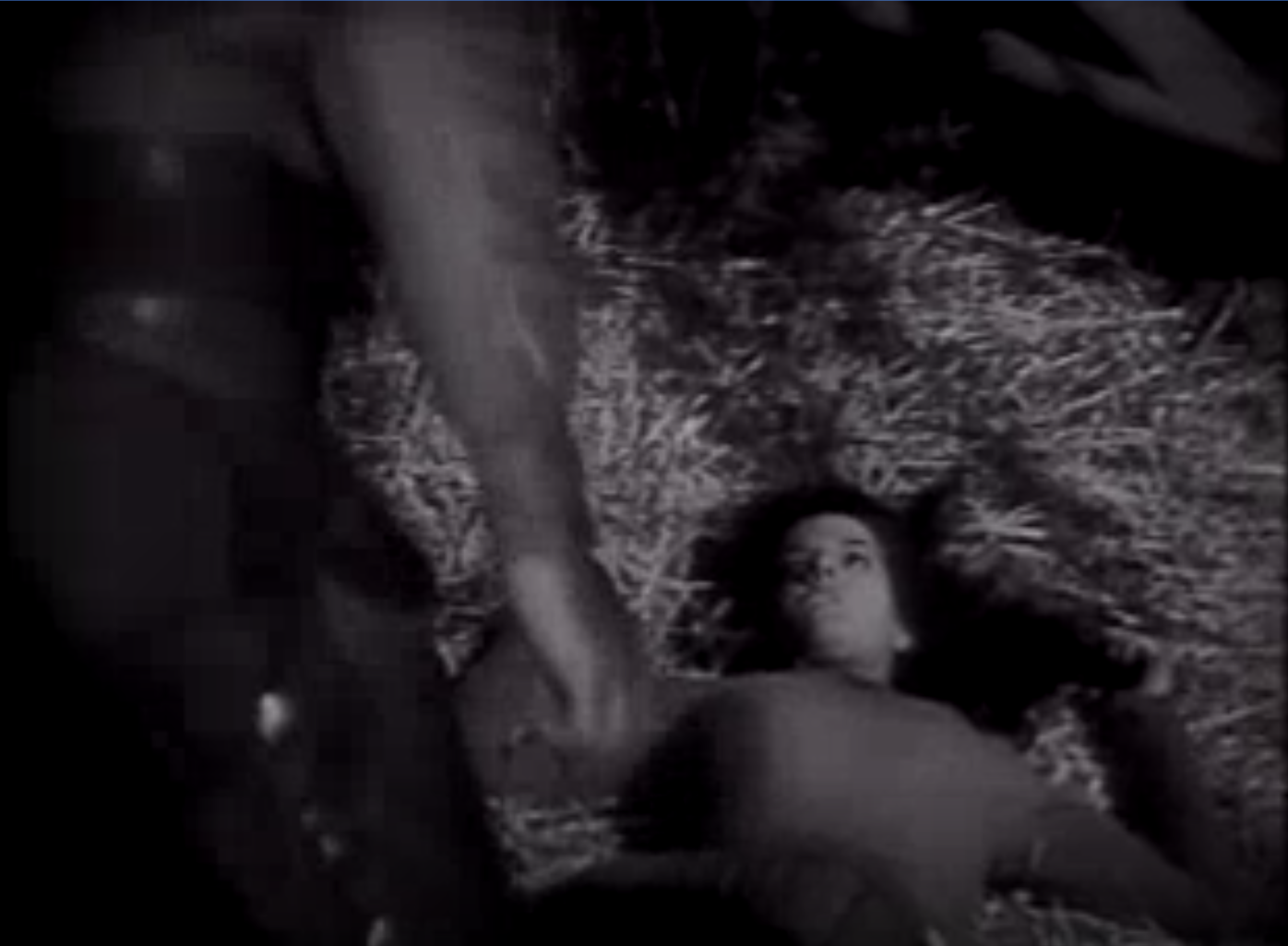
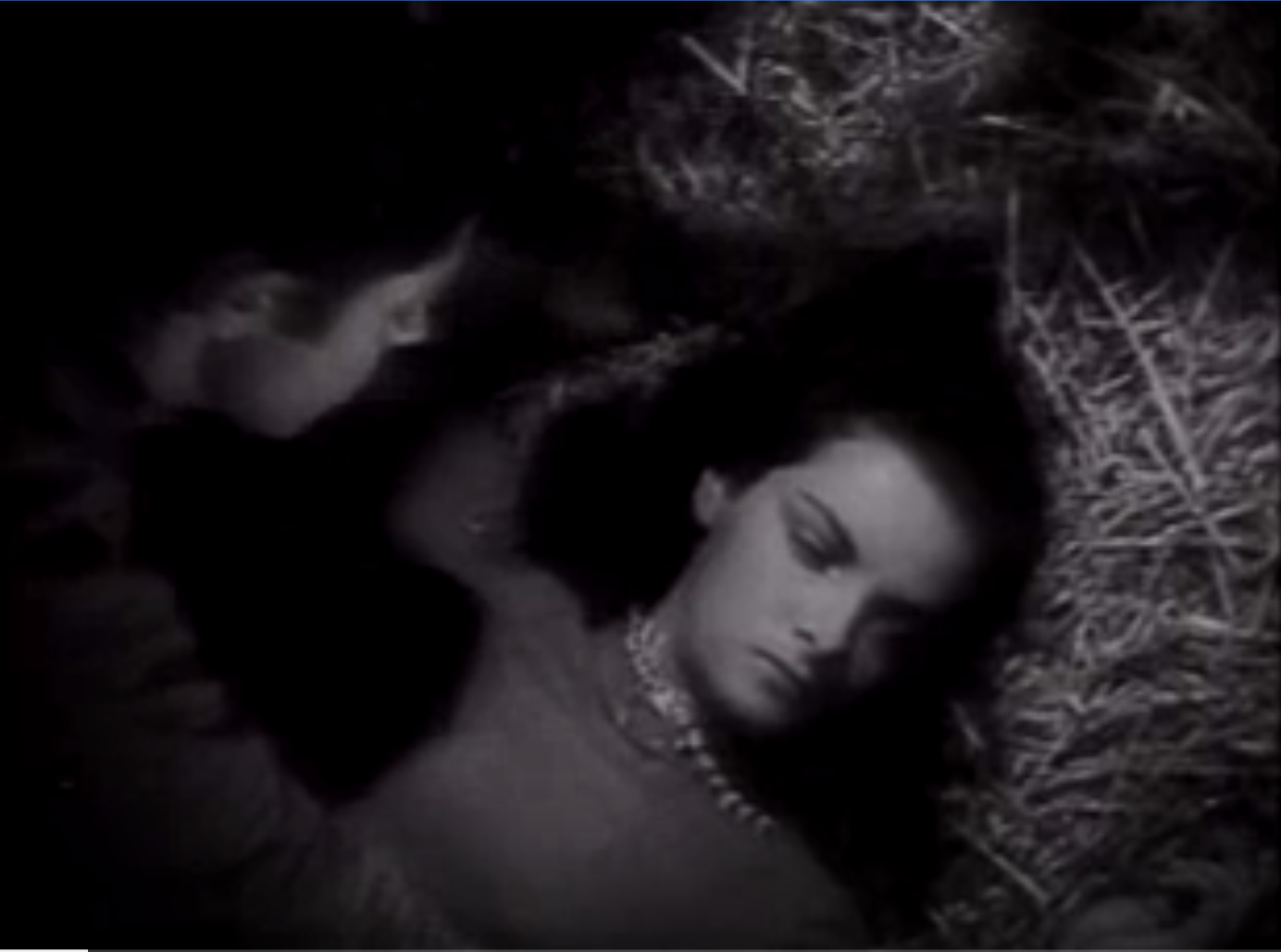
Figure 63: Barn 1; Figure 64: Barn 2
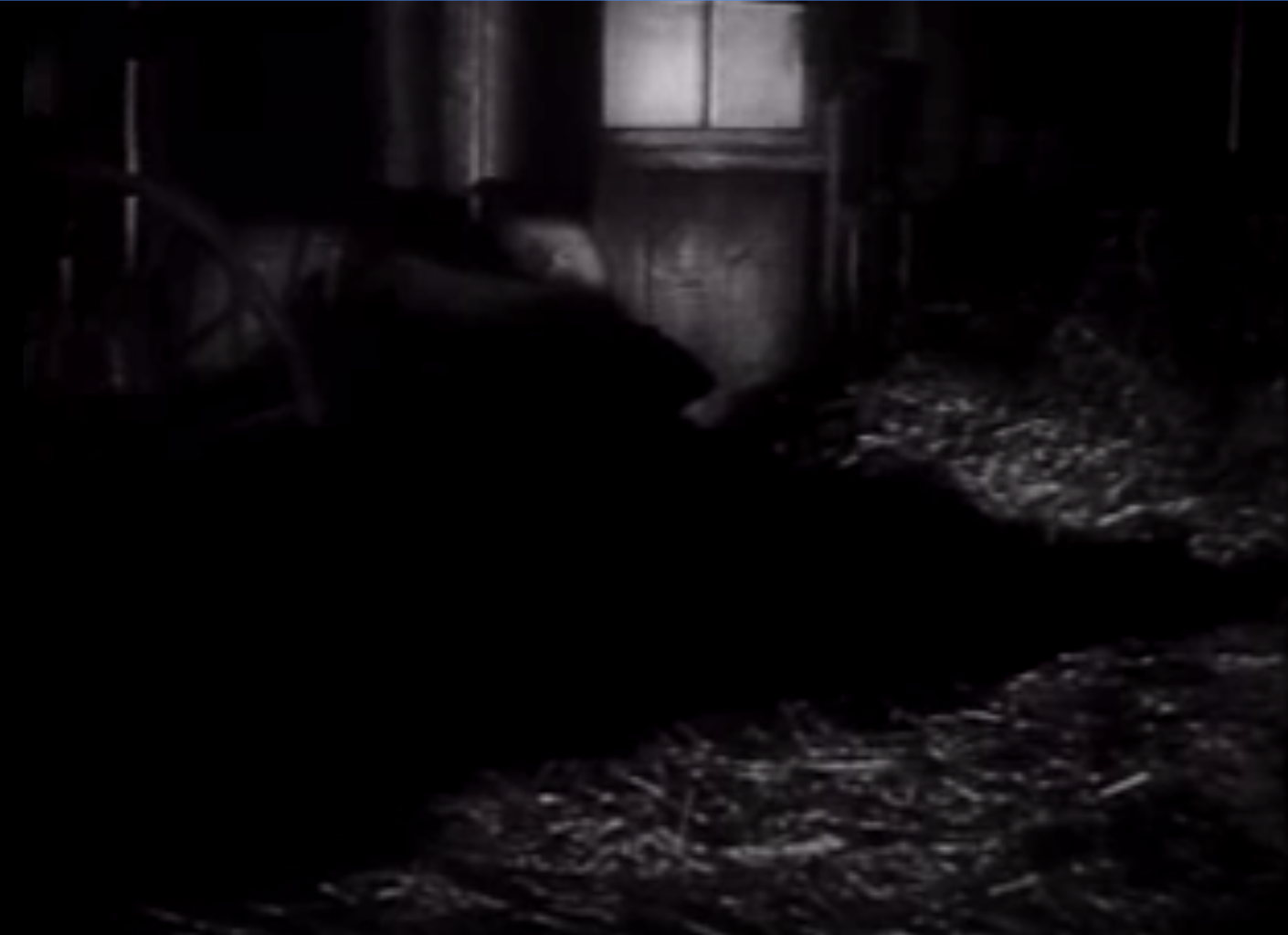
Figure 65: Barn 3
This scene occurs twenty minutes into the film. Jane Russell's character Rio attempts to kill Billy, but he subdues her. The two are then shrouded in darkness where we hear her tell Billy to get off and leave her alone, followed by the sound of her dress ripping and him saying "hold still or you won't have much of a dress left." While the Board did not write the word "rape" on the elimination form, they did single out this dialogue as needing to be cut in addition to the scenes of them struggling.
Implied Nudity in Bed
"Rio: "You can bring the minister in here in the morning it it'll make you feel better about it, now get out. you're not going to die - I'll get you warm." Also eliminate all scenes accompanying above deleted dialog, including scenes of Rio sitting down on bed and removing her shoes and stockings."
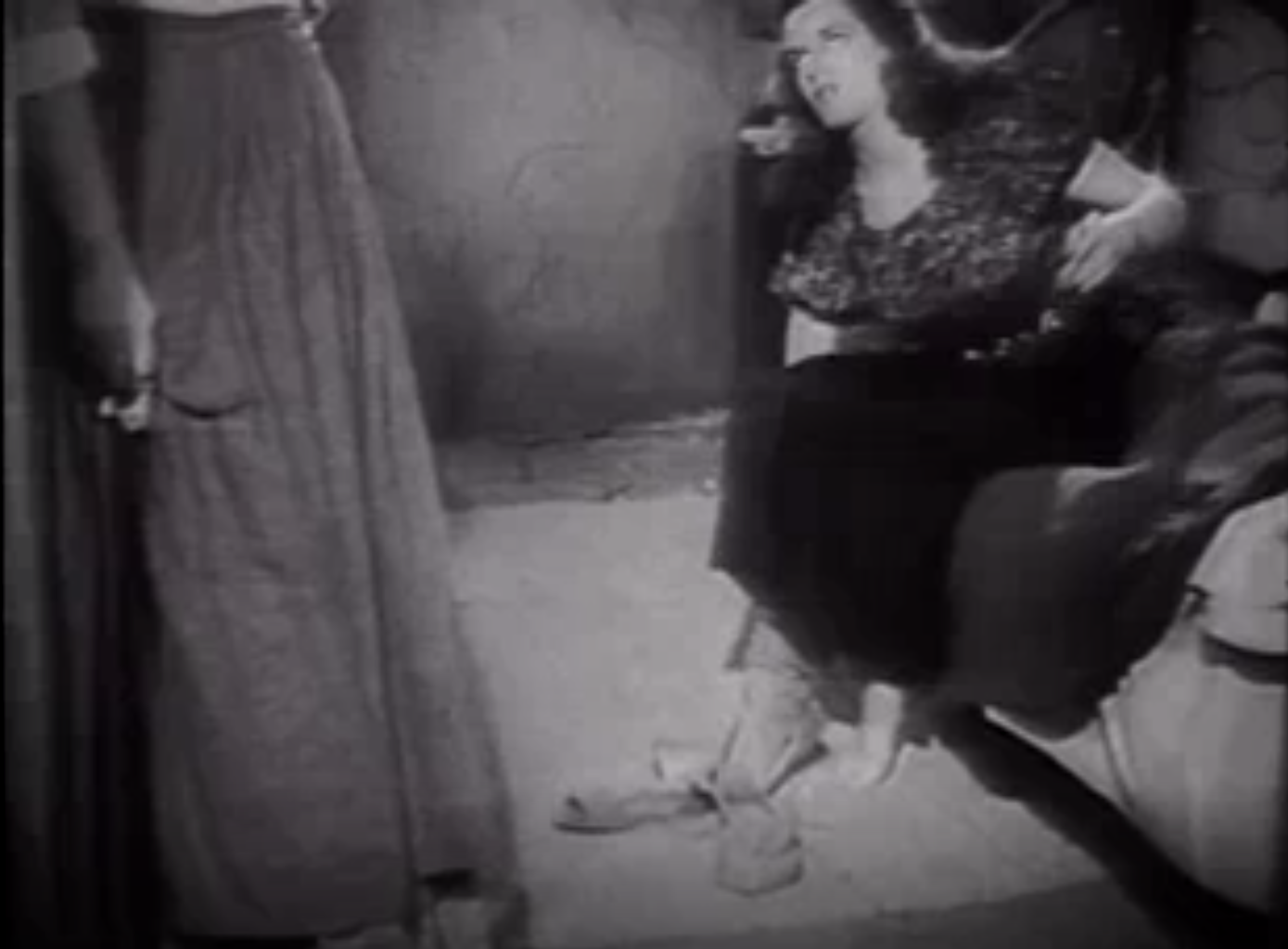
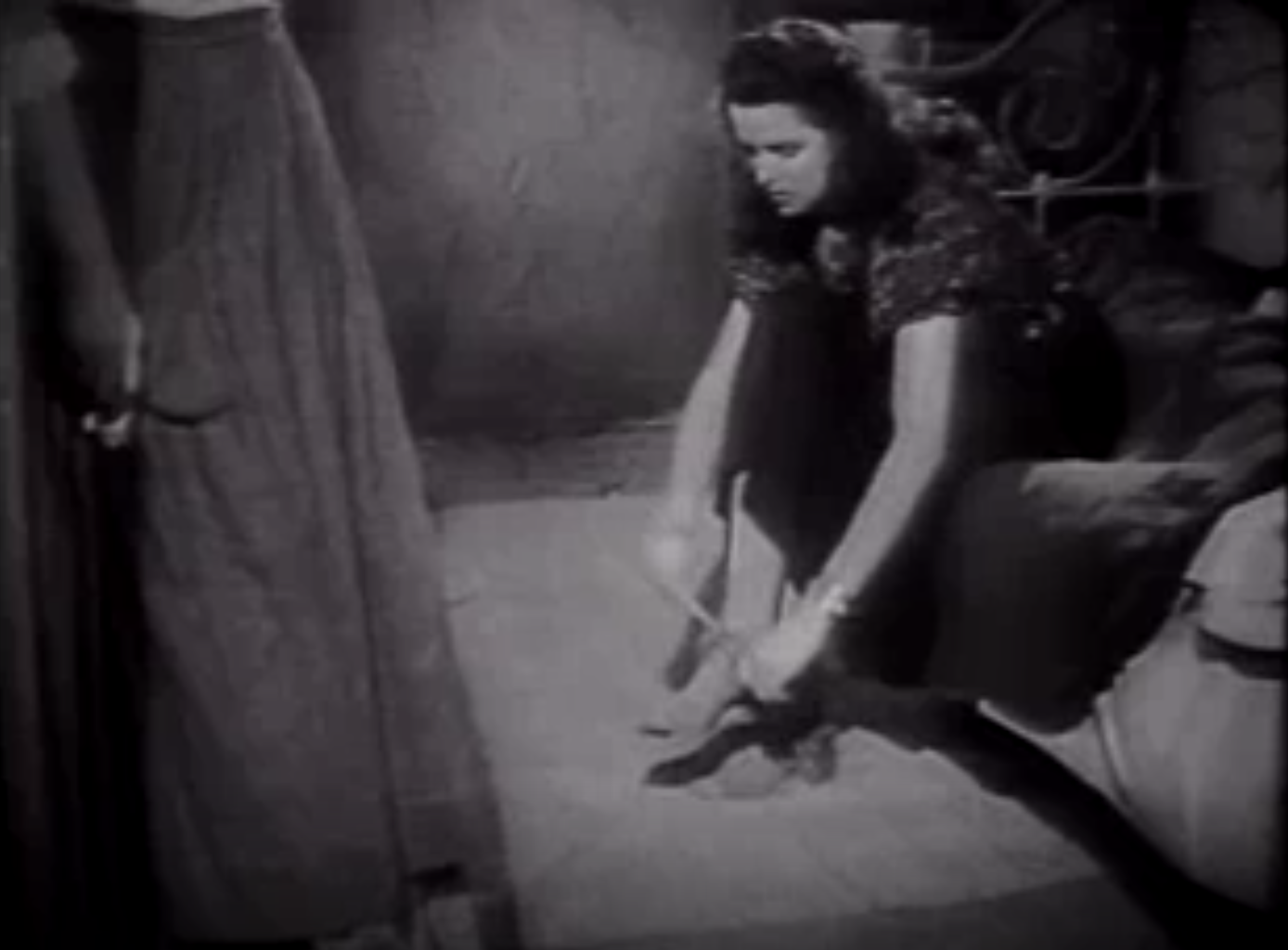
Figure 66: Bed 1; Figure 67: Bed 2
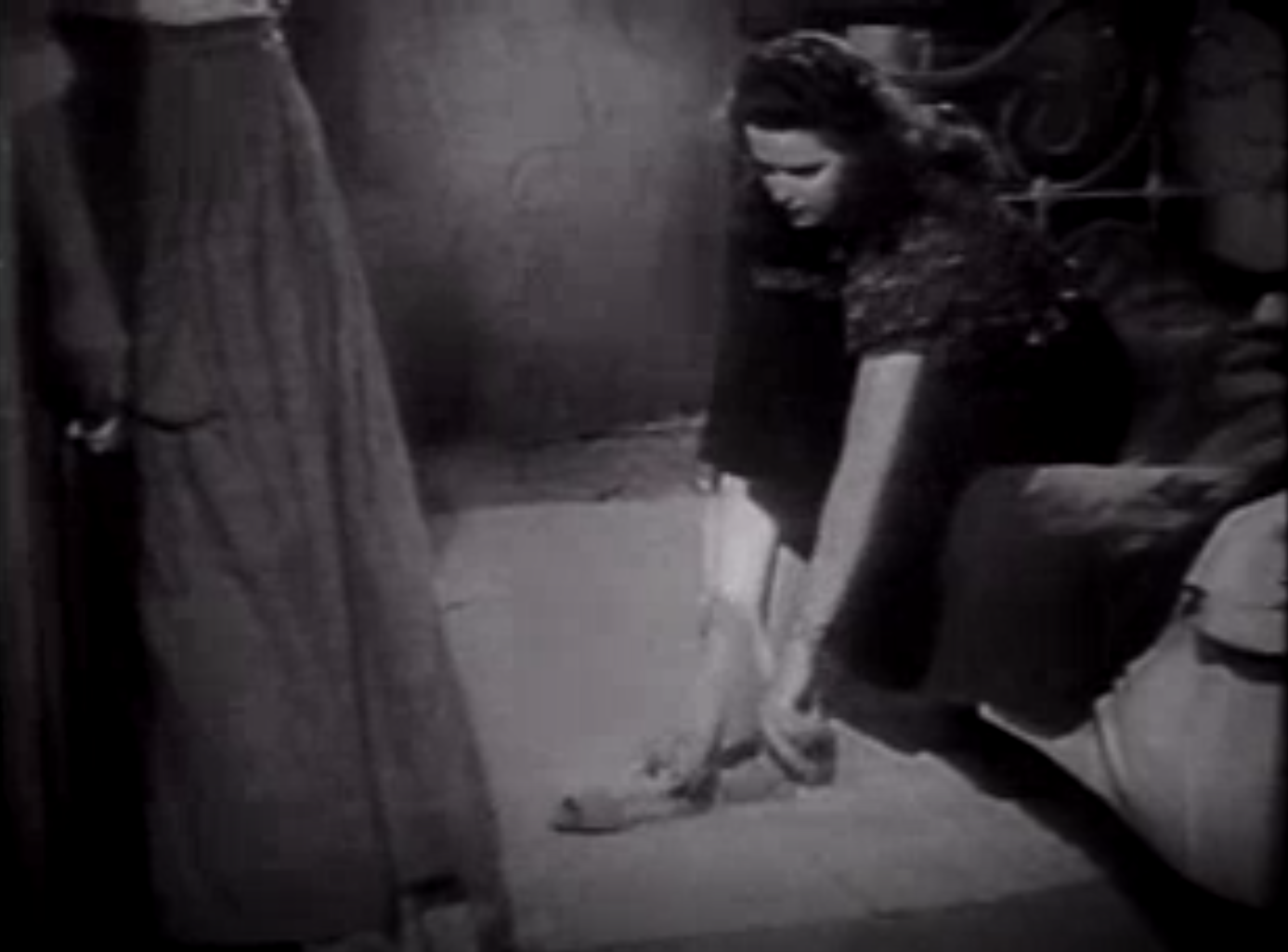
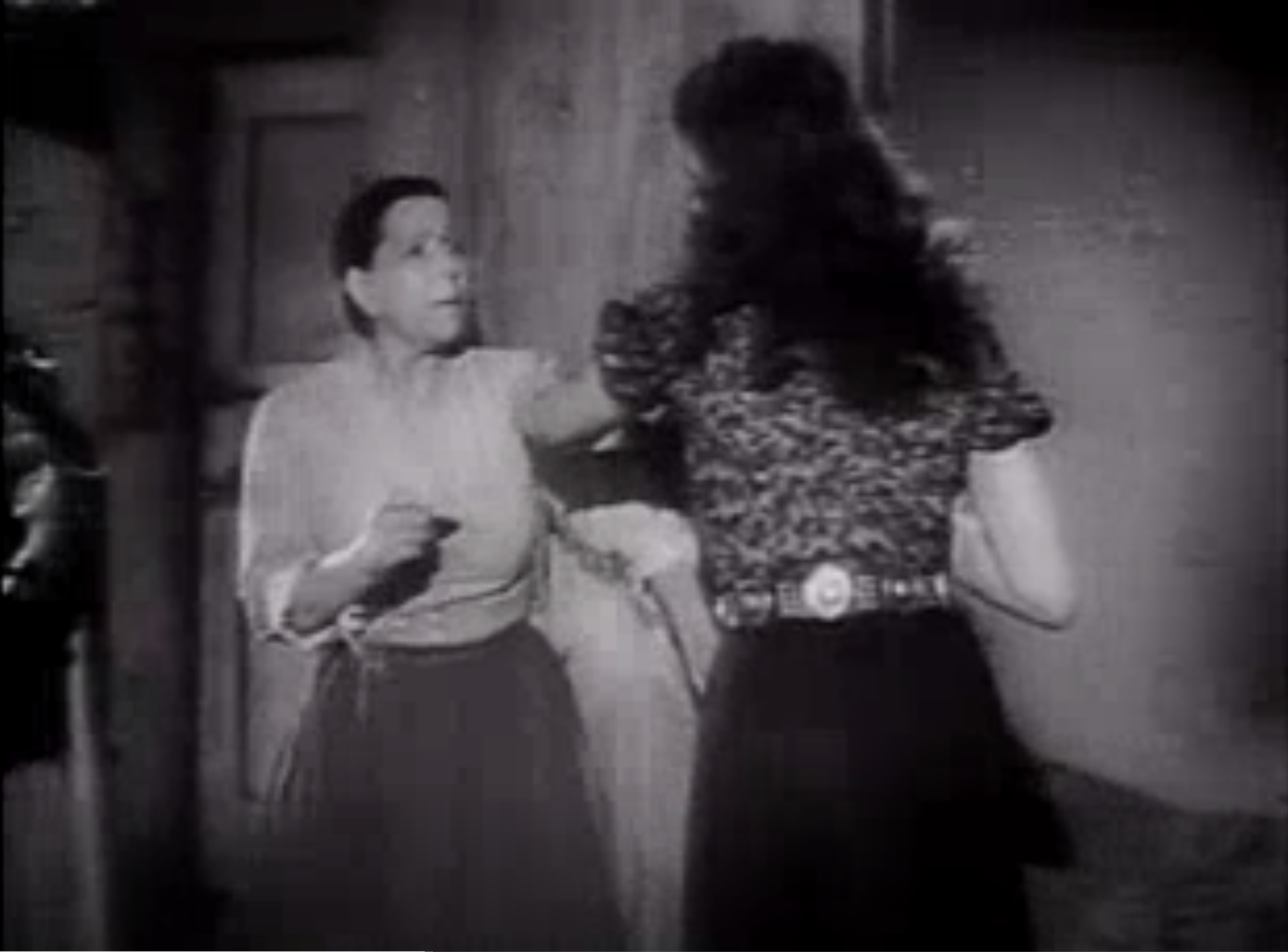
Figure 68: Bed 3; Figure 69: Bed 4
In a letter to the Board, a representative of the film urged Dr. Hissong to reconsider the censorship of this scene, claiming medical research and the Bible as evidence: "The girl tries to keep him alive at first, by piling on blankets; second, by piling on hot stones, and is reduced to the last resort -- that of resuscitation by bodily heat. Medical research, even in todays [sic] era of hot water bottles and electric devises [sic] will show that bodily heat is still being used for resuscitation. Jules Furthman [writer]...founds this sequence not only on medical research but goes back as far as the Bible, and I respectfully refer you to the first paragraph in the first Book of Kings for verification" (June 14, 1946, Correspondence). Suffice it to say the censors did not buy this paper thin argument.
Exposed Breasts
"In bedroom sequence between Rio and Billy, eliminate deliberate exposure of Rio's breasts as she leans over Billy in bed."
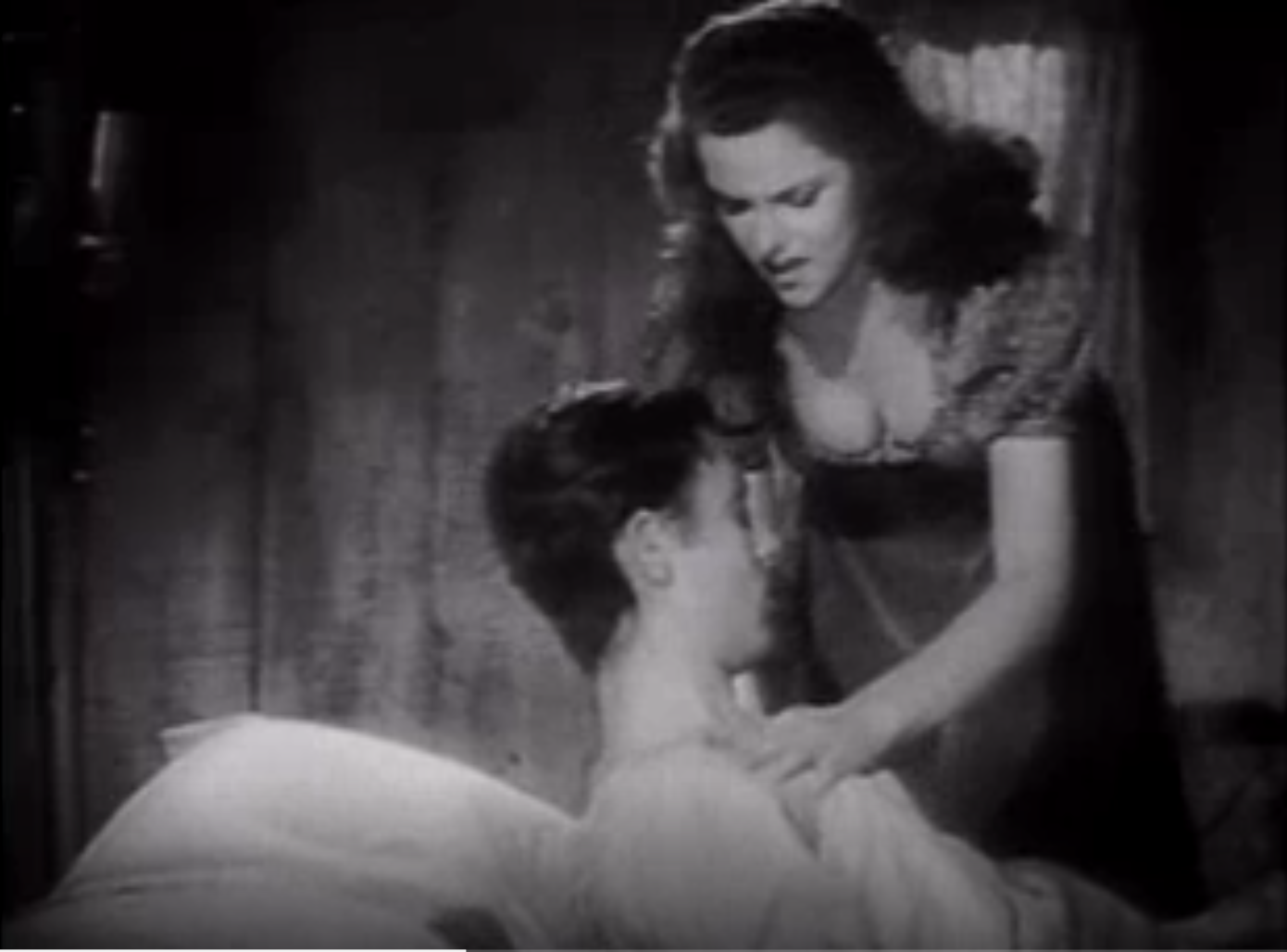
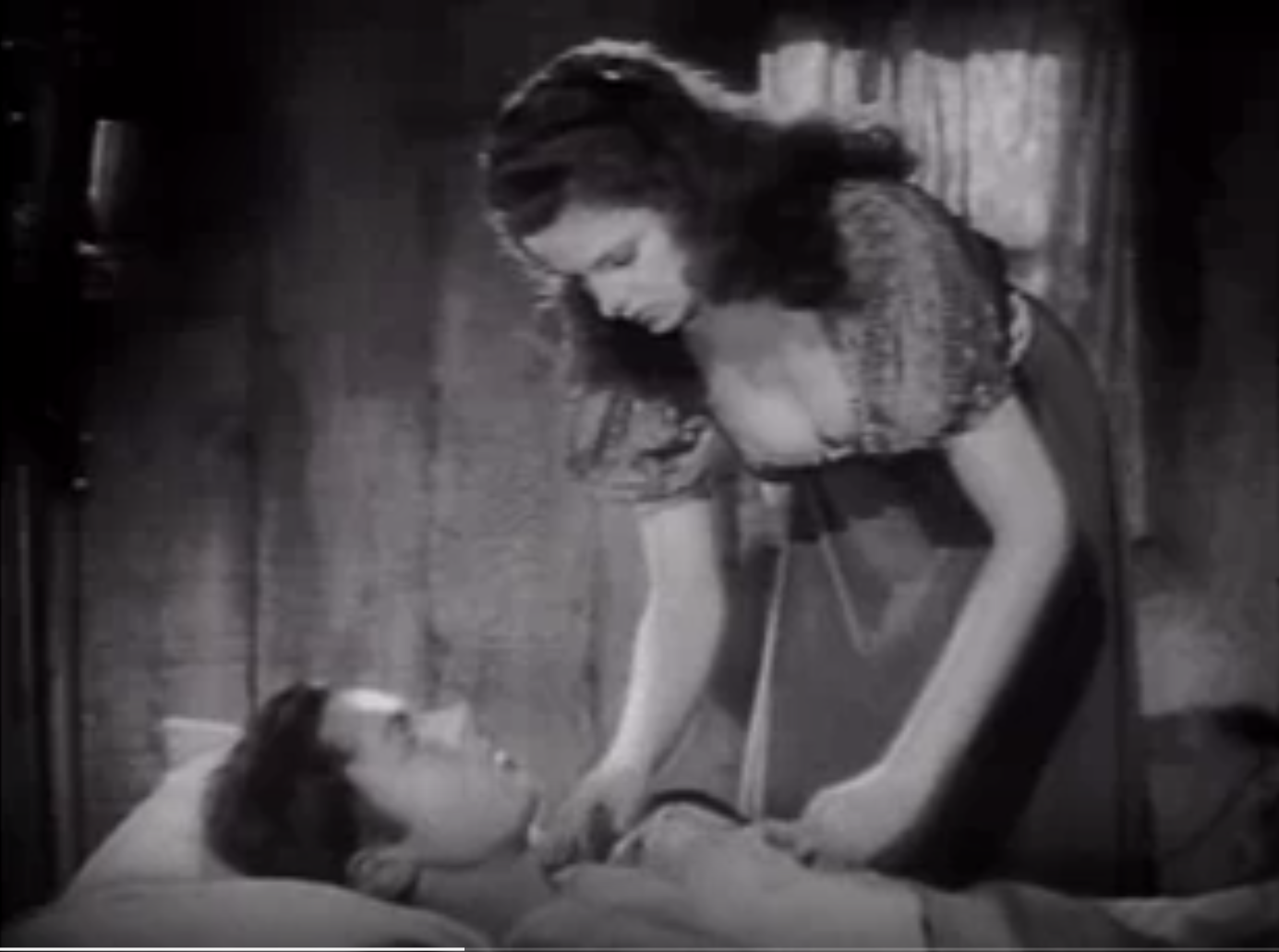
Figure 70: Bed-Exposed 1; Figure 71: Bed-Exposed 2
This specific scene occurs at the 45 minute mark, and this type of content, "exposed breasts," is repeatedly censored throughout the film.
Implied Sexual Relations
"Where Rio is again in bedroom with Billy and where Billy starts to sit up in bed, eliminate scene where he embraces Rio and cut solidly all scenes between them in this sequence up and including all close-up scenes of their faces."
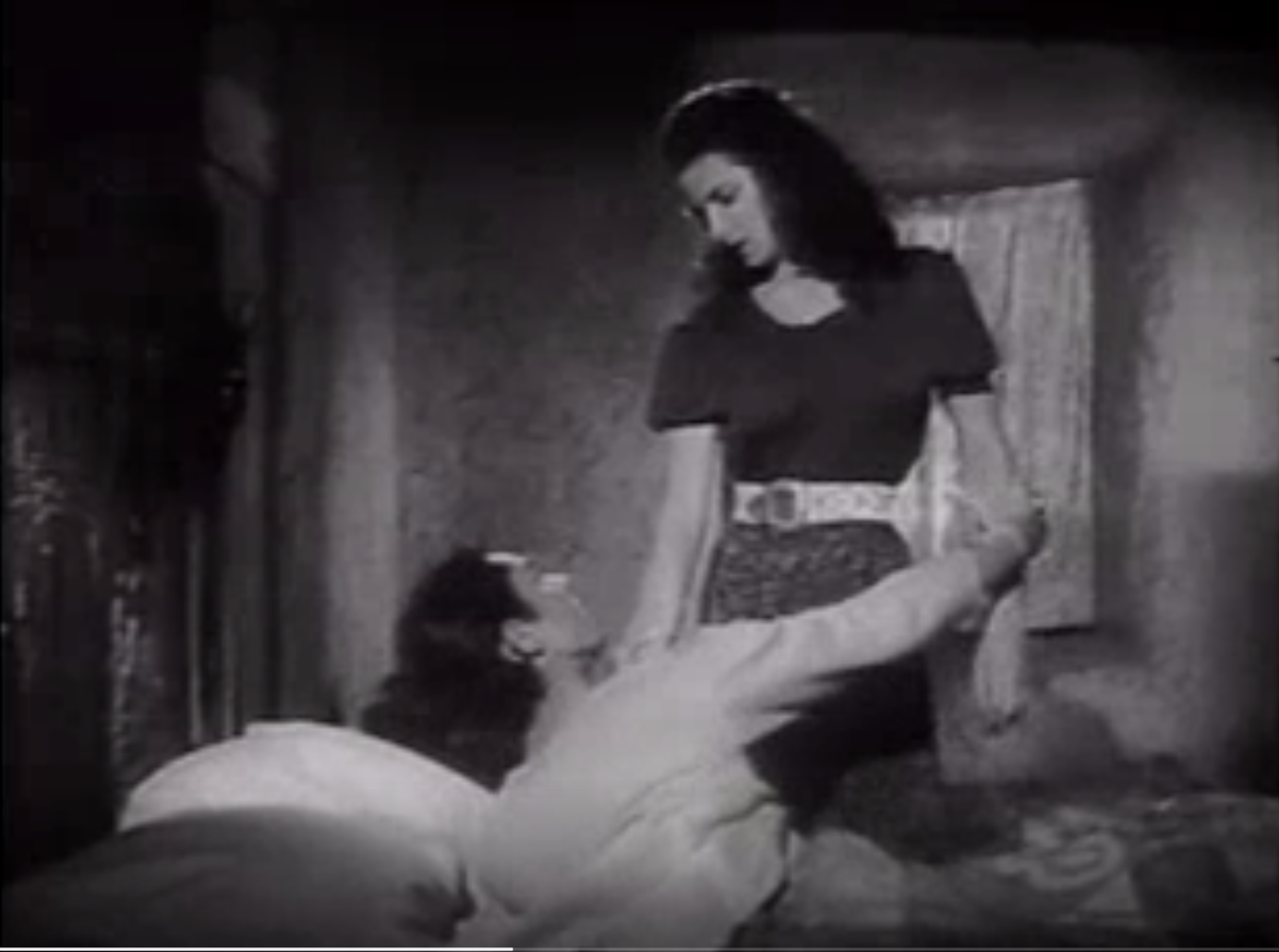
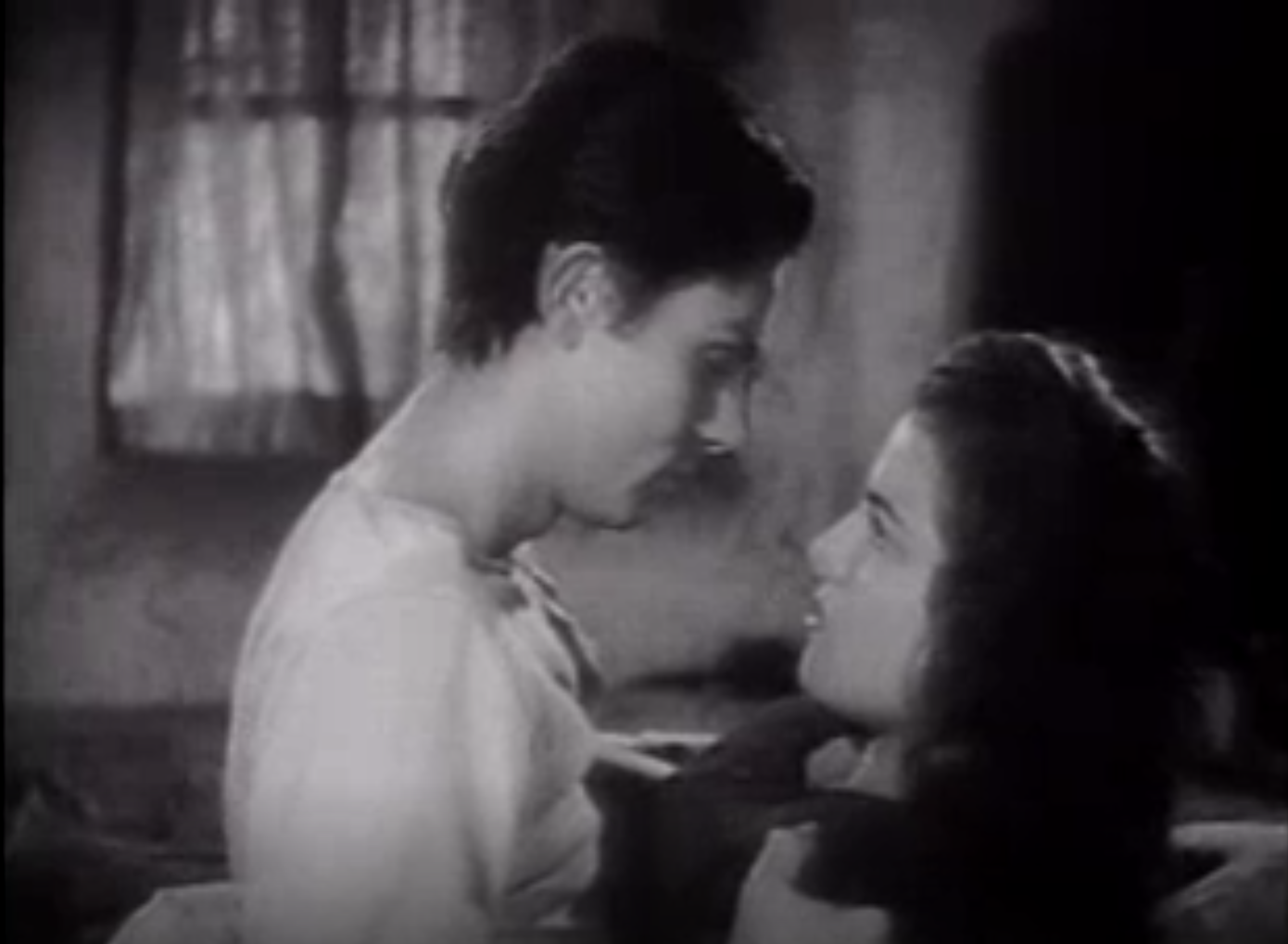
Figure 72: Bed Sex 1; Figure 73: Bed Sex 2
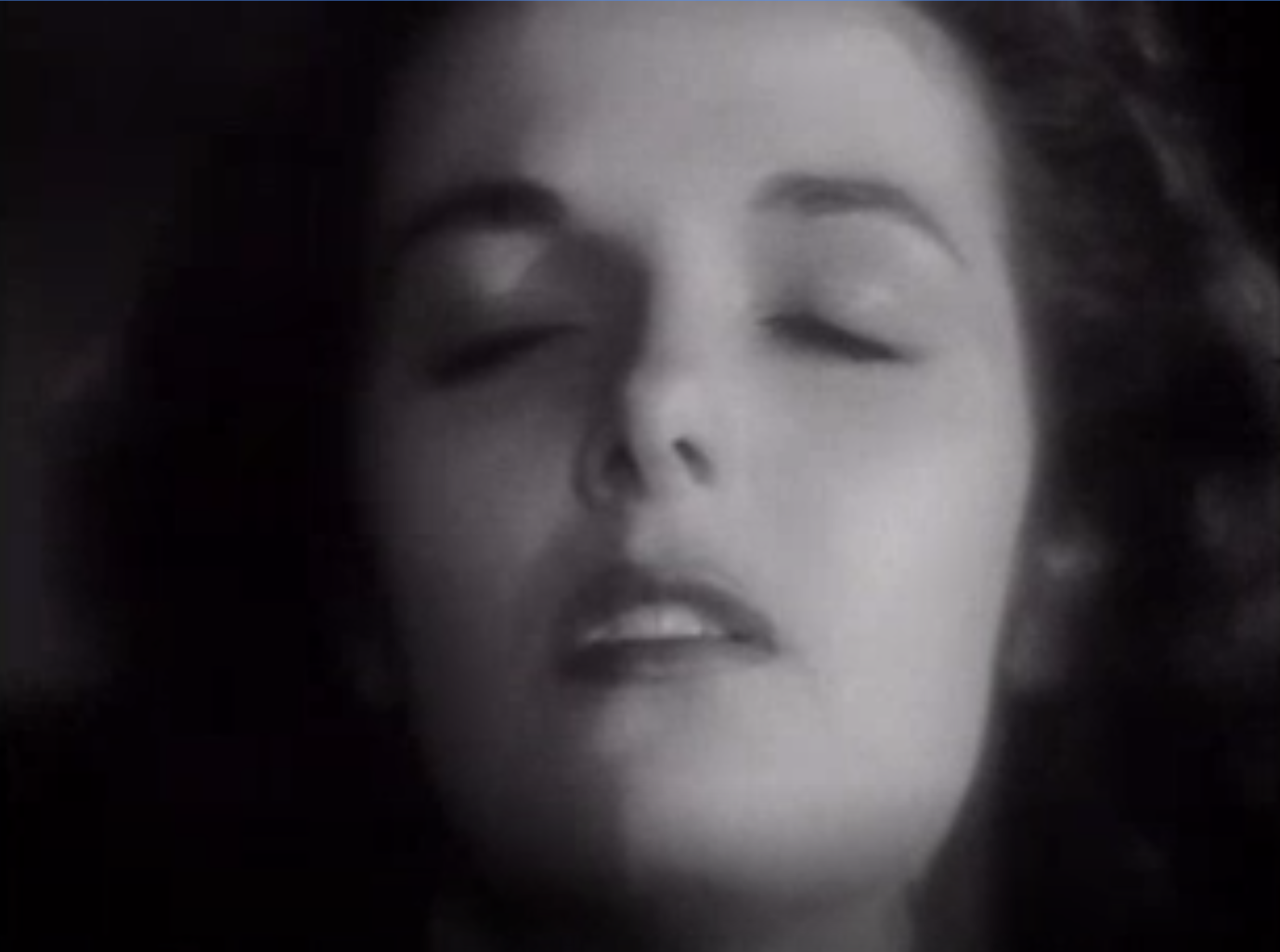
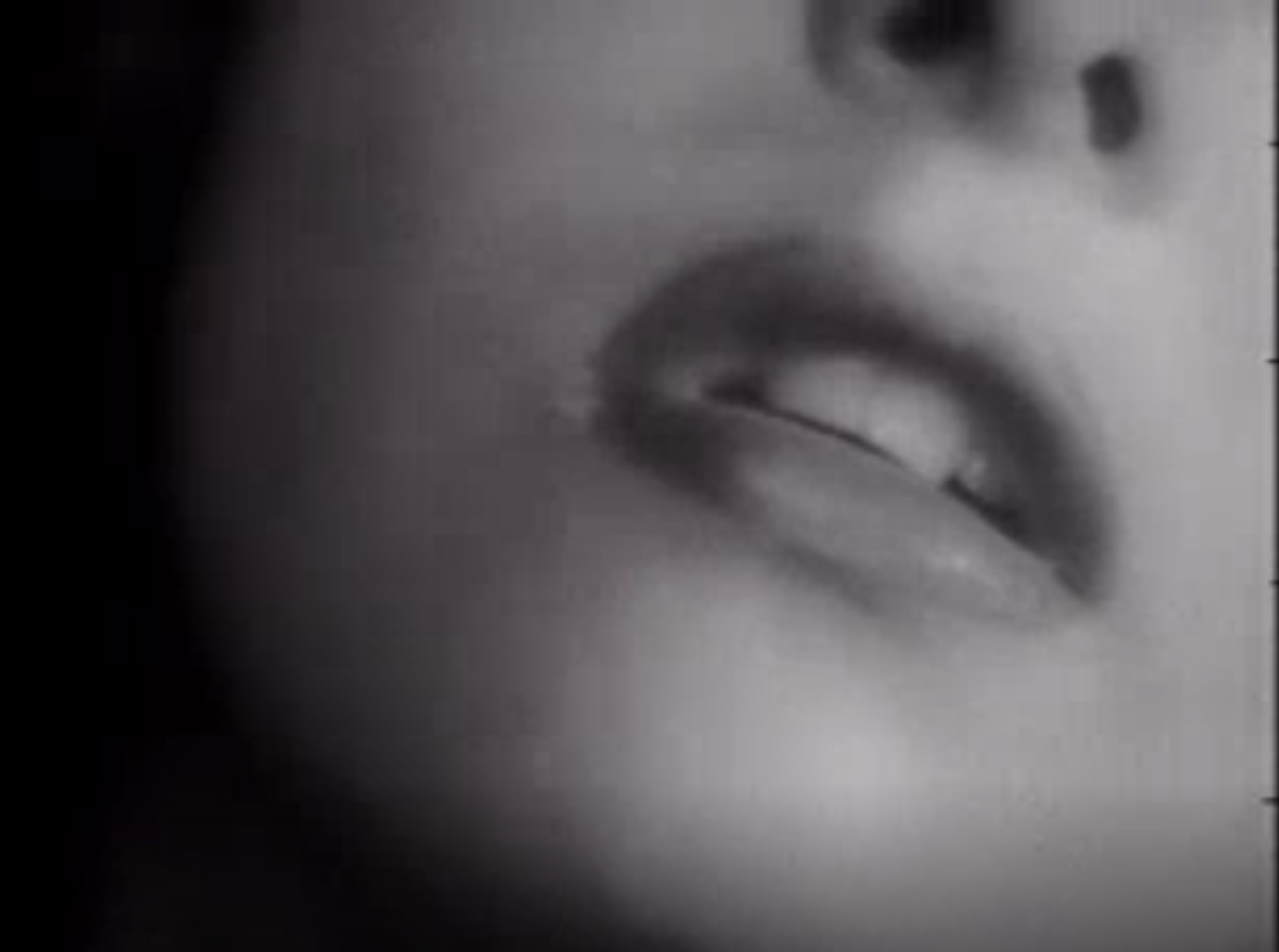
Figure 74: Bed Sex 3; Figure 75: Bed Sex 4
Starting at the 48 minute mark, this scene concludes with Rio's aunt leaving the house, leaving Rio and Billy alone. The following scene opens with Rio laying at the end of the bed smiling at Billy, a common trope used by filmmakers in the Production Code era to convey characters having sexual relations without showing it.
Implied Sexual Relations - Aggressive
"Eliminate following dialog between Billy and Rio in house and all accompanying scenes between them including scenes deliberately exposing Rio's breasts."
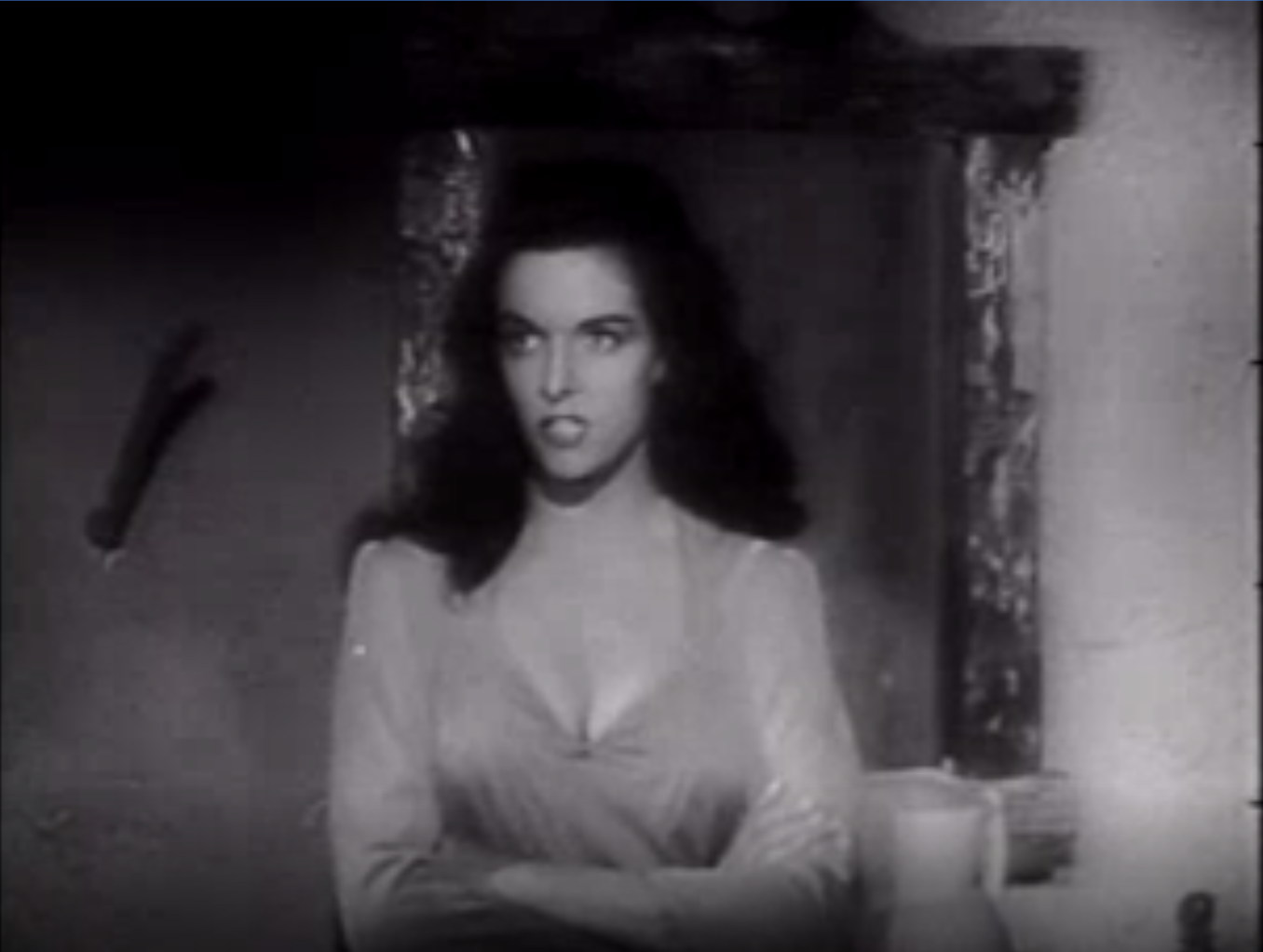
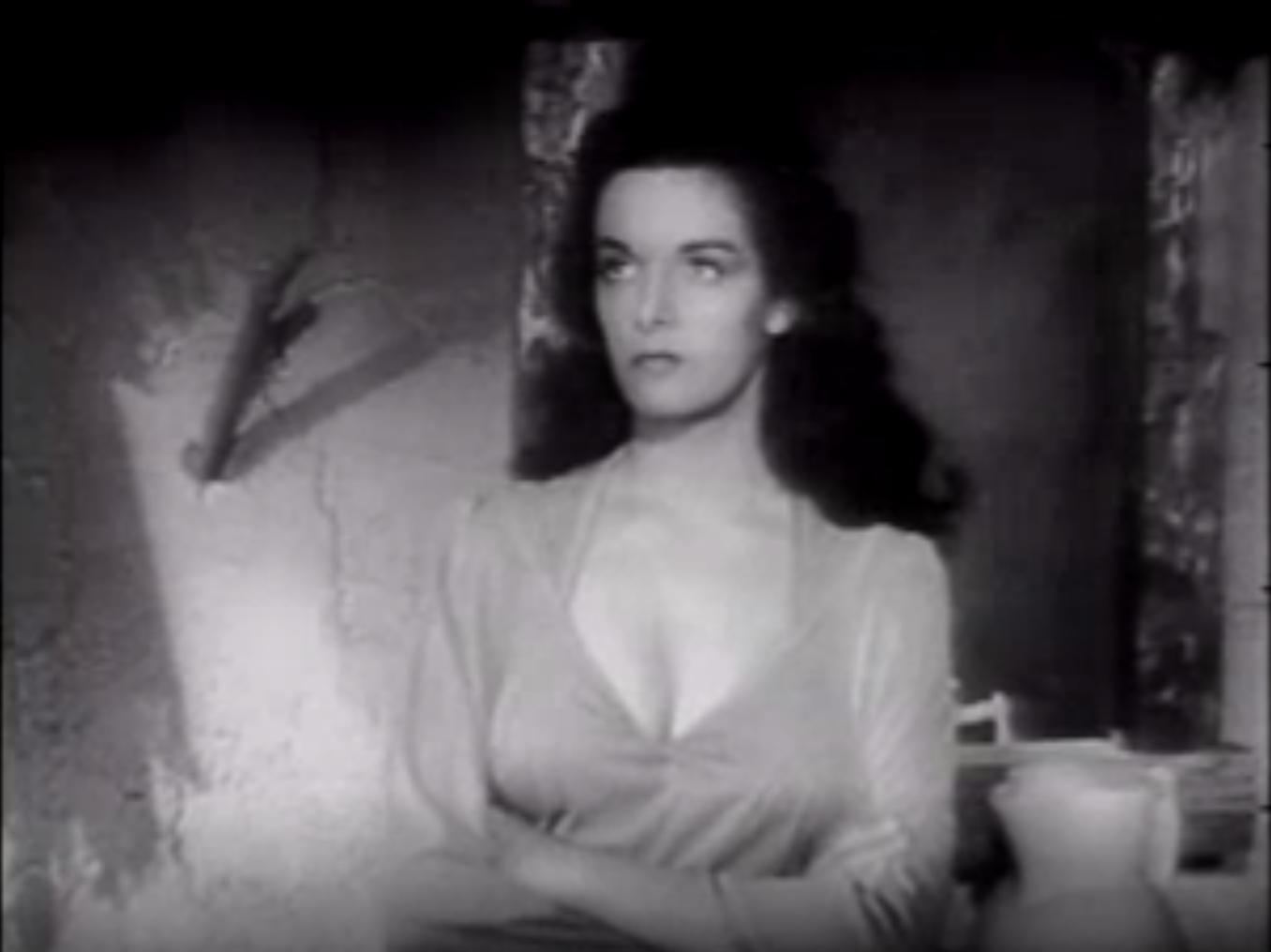
Figure 76: Implied Sex - Aggressive 1; Figure 77: Implied Sex - Aggressive 2
This scene occurs one hour and eight minutes into the film. Like many of the sexual scenes in this film, there is an aggressive violence in the dialogue and implied actions. Billy has returned after being betrayed by Rio, and the dialogue implies that he plans to have sex with her and, while possibly consensual, his aggressive tone indicates that it is not romantic: "I like to hear you ask for it. Keep it up. Beg some more....Will you keep your eyes open?....Will you look right at me while I do it?" After this last line there is a rushing close-up and fade out. In the following scene the other characters find Rio left tied up in the desert with excessive cleavage (see below).
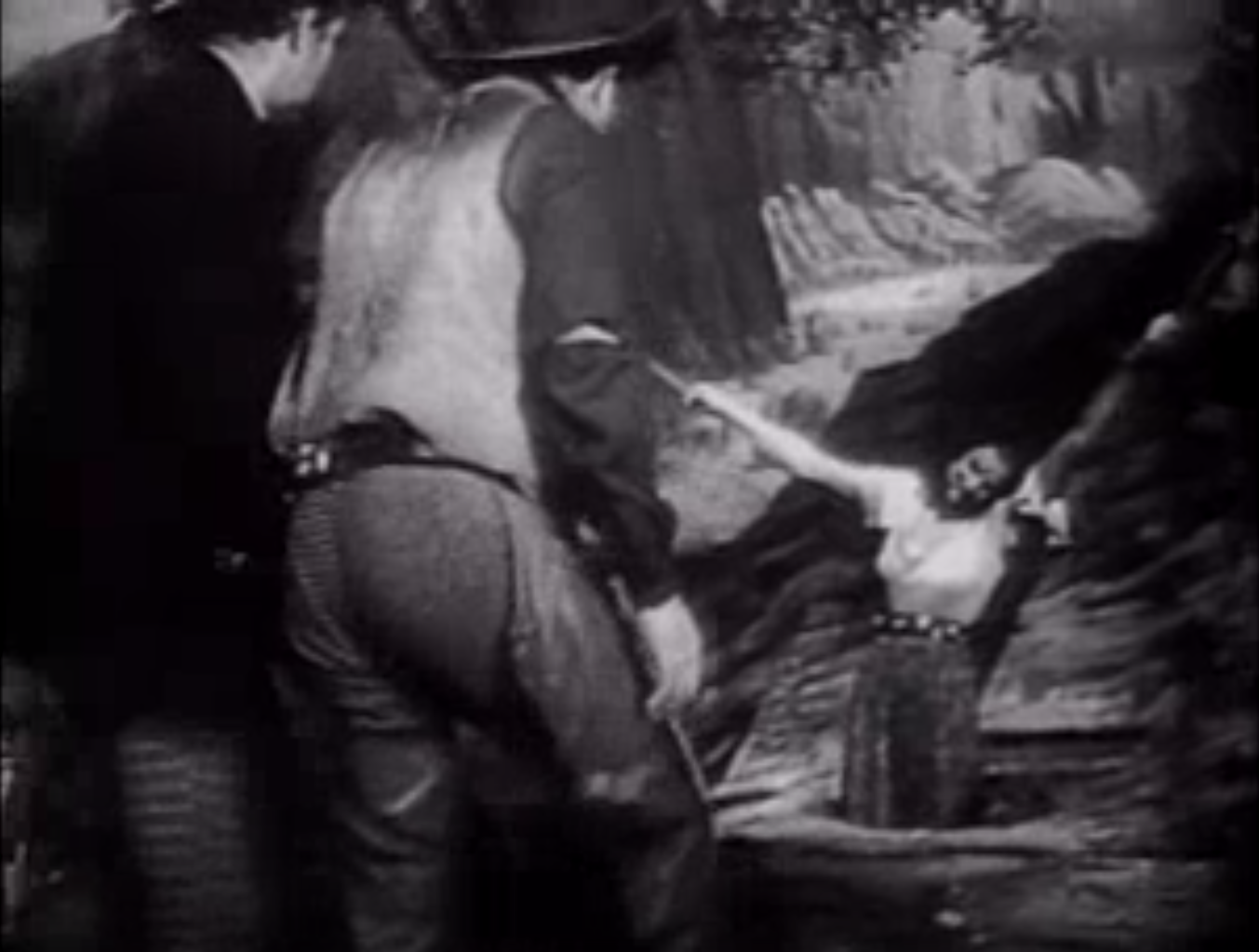

Figure 78: Tied 1; Figure 79: Tied 2
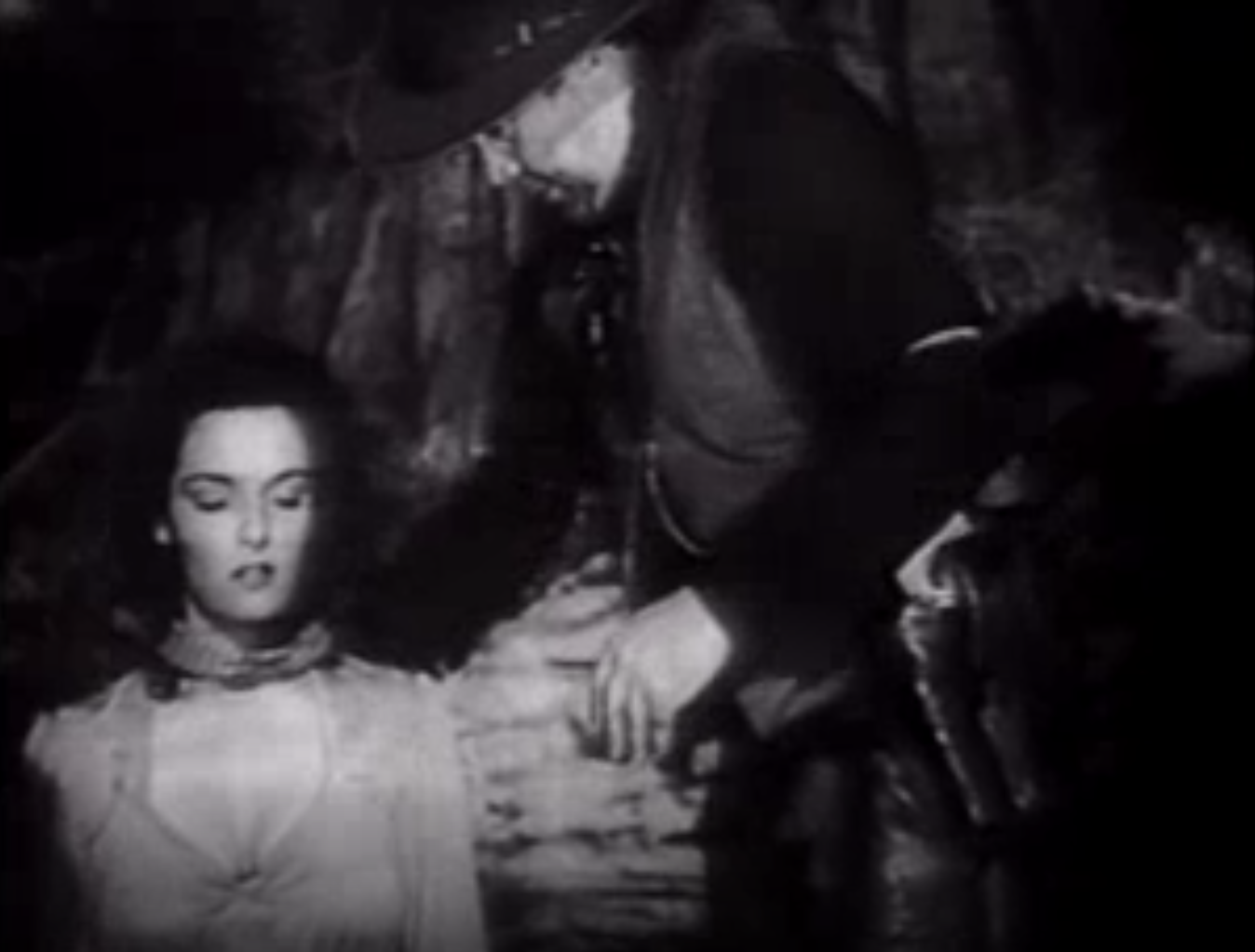
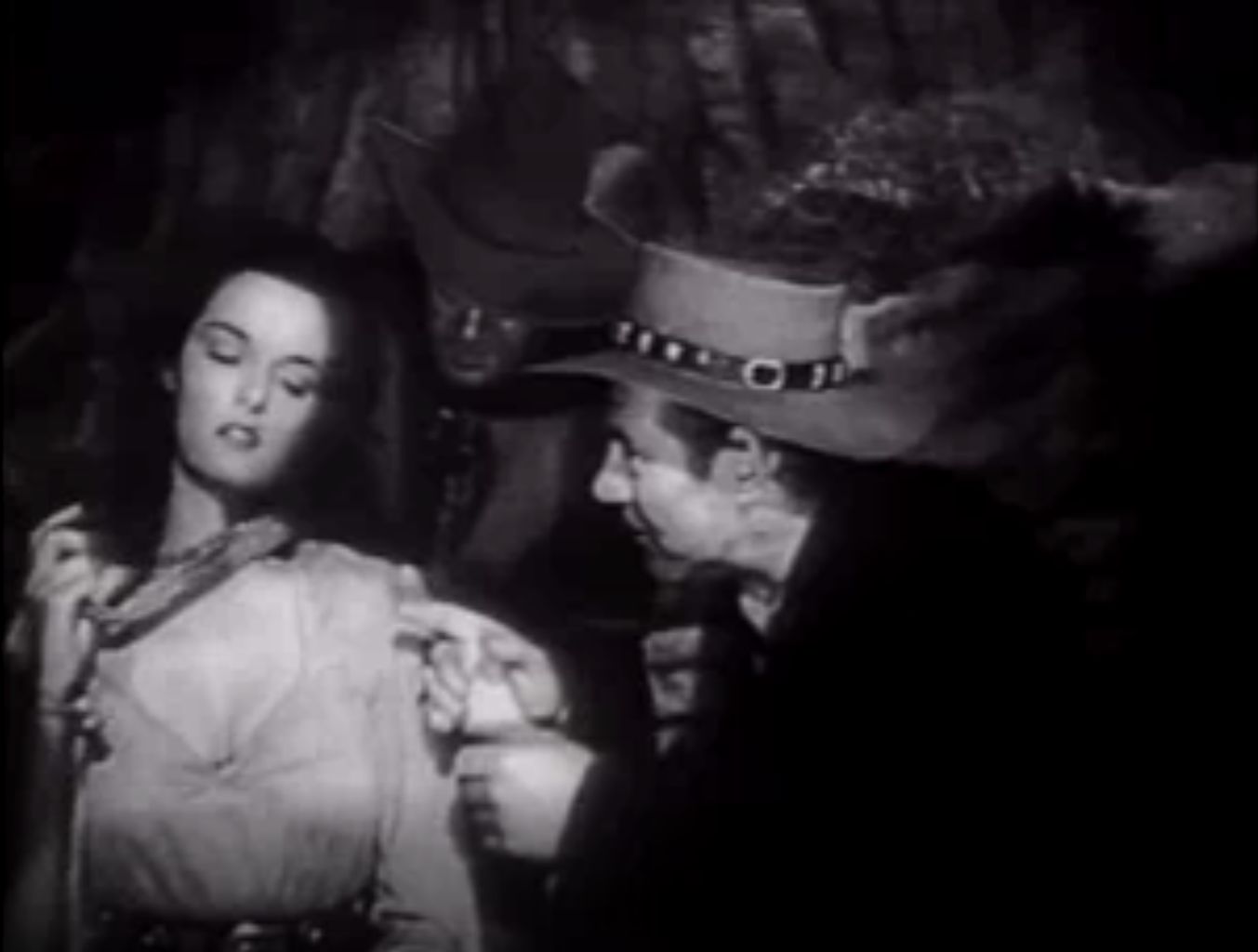
Figure 80: Tied 3; Figure 81: Tied 4
This sequence occurs one hour and eleven minutes into the film. Interestingly enough, these scenes of her in bondage with the same amount of skin exposed, and it appears even more, were not a part of the July 1946 eliminations. The fact that this sequence was not eliminated reinforces the notion of how subjective film censorship was. A quick comparison of the images from the films reveals that there is just as much sexual exposure occurring in this sequence, and it is difficult to understand why the censors left it in the film. Possibly it was because the fact that Rio was tied up and left by Billy, and found by Doc and the Sheriff, is an important plot point and the censors wanted to leave it in the film for that reason. But whatever their reason for not eliminating it, this would have been one of the scenes that the Board and advisory committee would have seen on November 19, 1946 and most likely contributed to their decision to reject the film entirely.
Exposed Breasts - ad nauseum
"Also eliminate scenes of Rio where her breasts are unduly exposed."
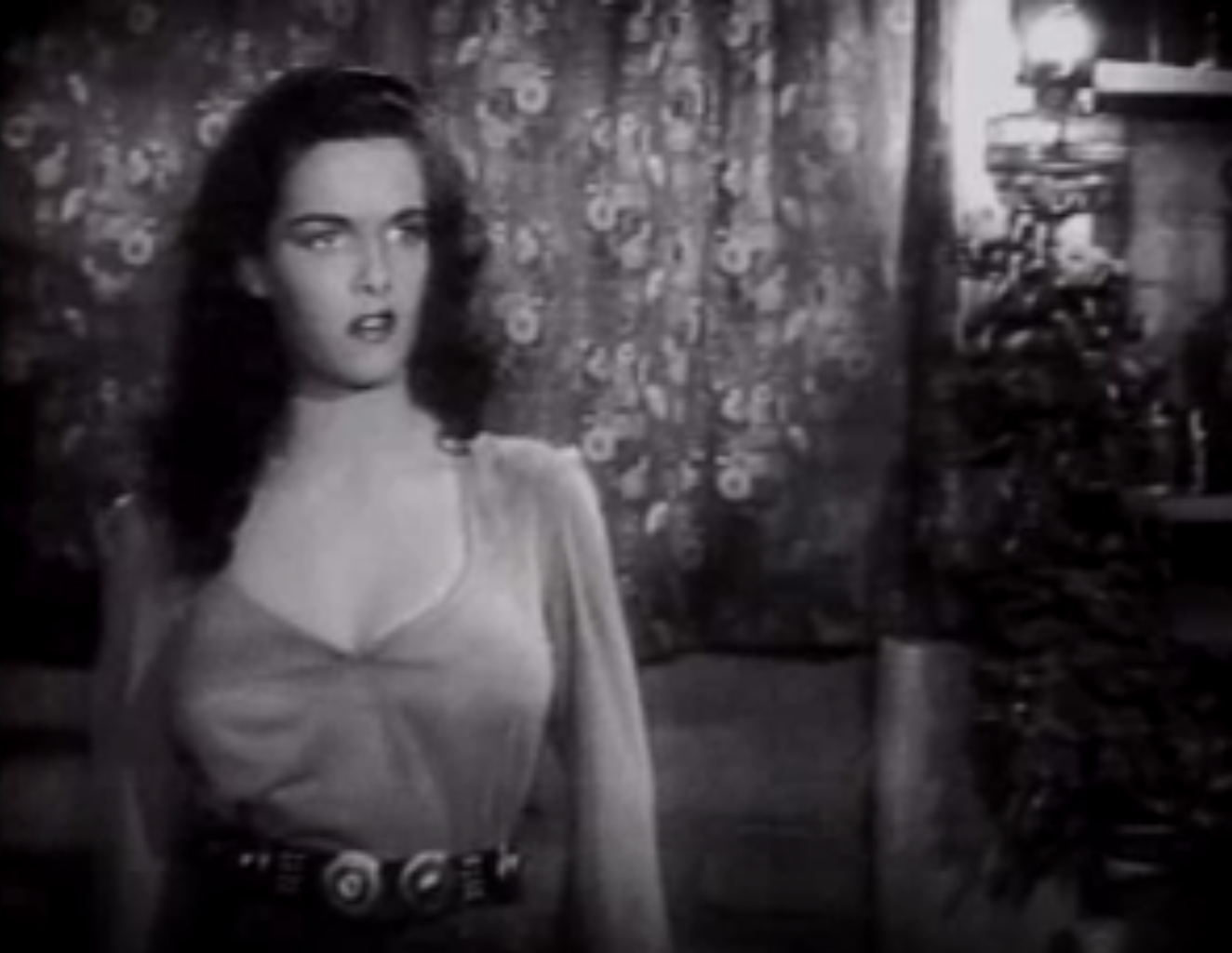
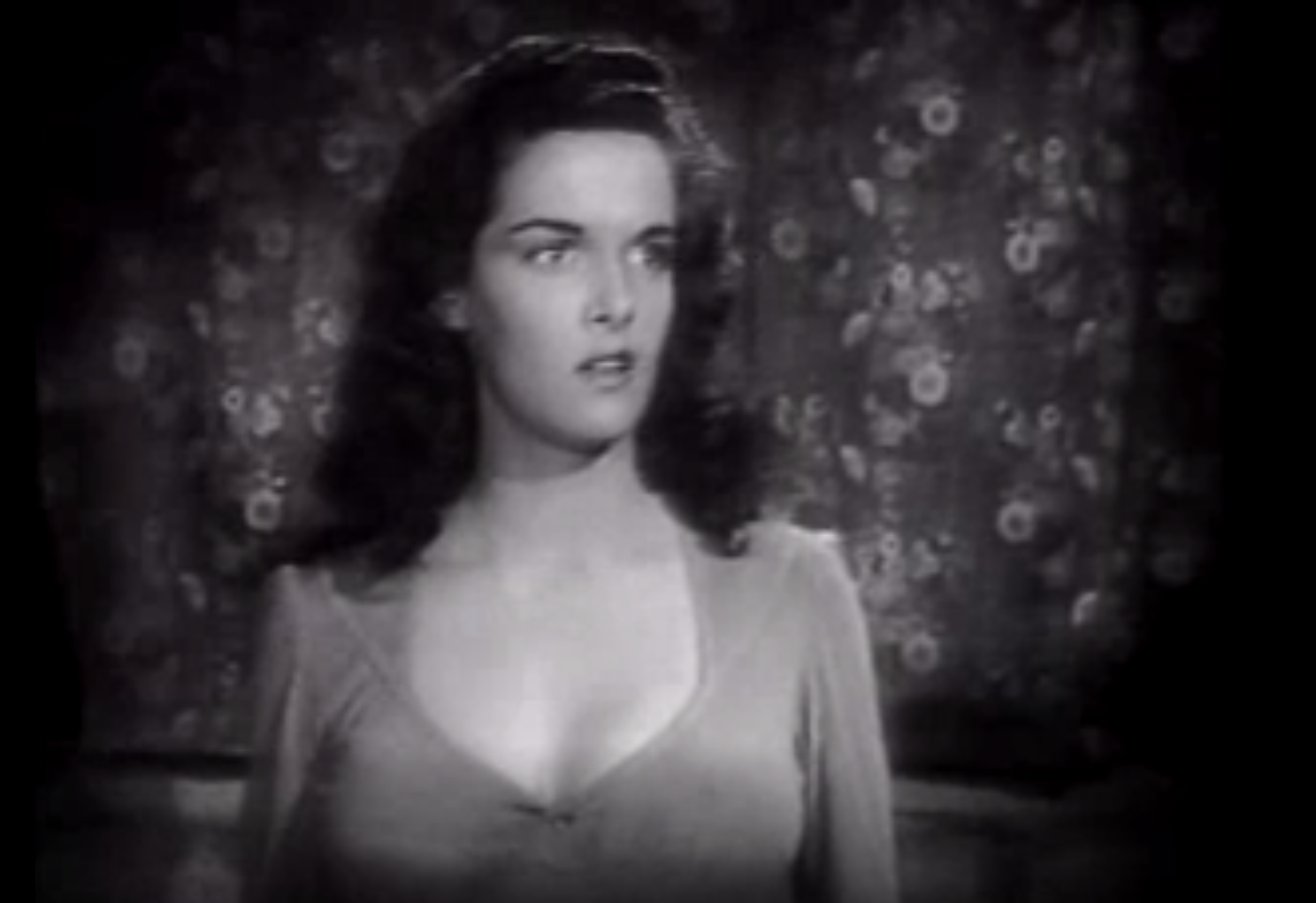
Figure 82: Exposed - Ad Nauseum 1; Figure 83: Exposed - Ad Nauseum 2
It is rather unnecessary to show all of the images of "exposed breasts" that the Board censored, for enough examples have already been given. These examples come from the end of the film and further emphasize the sexual content that the censors wanted removed from the film.
Conclusion
On November 19, 1946 the Board watched a version of the The Outlaw that did not have any of the censored content highlighted above. They watched the film as a whole, looking for any moral or educational content, per the Board's statute. The majority of the advisory committee (five to four) voted that the film should be rejected and not shown in Ohio. One reviewer felt strongly that even the removal of the sexual content was not enough to accept the film, "Eliminating the offensive sexual sequences is merely permitting one's self to be diverted from the fundamental considerations involved in the picture by a red herring drawn across the path. The picture does not come within any of the categories established by law into which pictures must fall" (Advisory Committee Summary, 1946, Correspondence). This reviewer is arguing that even beneath the objectionable sexual content, the film does not meet the standard of moral, educational, or harmless. The Board agreed.
By providing the film embedded, the requested eliminations, and the historical context, this case study gives you the chance to see the entire situation from the Board's perspective and understand what led them to their decision. You can view an uncensored version of the film, see the content that was eliminated from the film for the July 1946 version shown in Ohio, and then attempt to imagine watching the whole film without any of those scenes. When the Board watched the patched-together version of the film they decided that it had no "positive educational and moral implications if shown to audiences of all age groups," in fact they saw it as particularly harmful due to the glorification of crime and sex (Dr. Hissong to Mr. Greenberg, December 4, 1946, Correspondence). While Howard Hughes lost his case in court in 1947 and film censorship remained steady, in the years to come the Board would increasingly lose their power to reject films on those grounds, ultimately being forced to close down altogether.